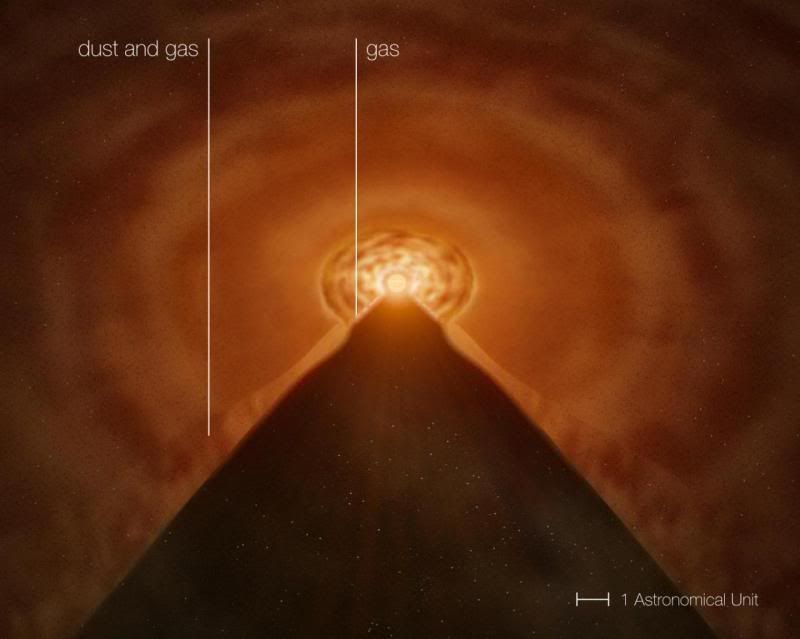You are here
Binary Star Research Institute.Action At A Distance (2009)
Primary tabs
| Size | Seeds | Peers | Completed |
|---|---|---|---|
| 1.35 GiB | 0 | 0 | 0 |
This is a TORRENT File
how to download a torrent:
http://www.wikihow.com/Download-Torrents
you will need to sign up at http://tracker.conspiracycentral.net
to download this file!!!
*********************************************************************
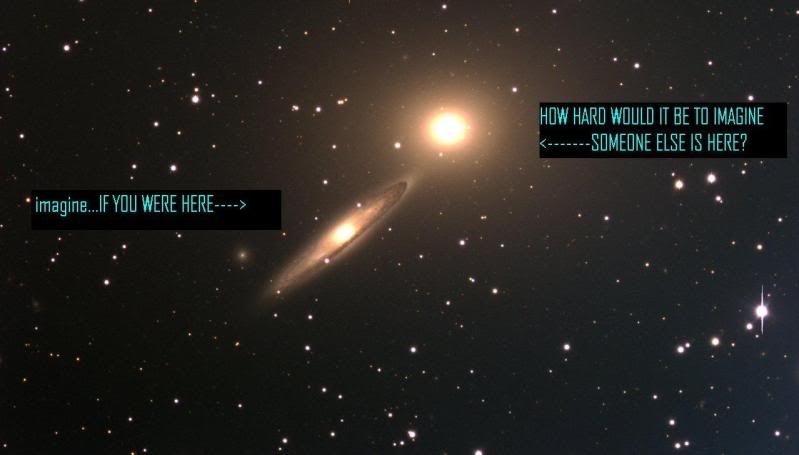
Binary Star Research Institute.Action At A Distance.2009
------------------------------------------------------------------------->
Can you Remember what the color the Sun was when you were Young???
When a Child draws a picture of the Sun, they usually use the yellow crayon!!!
Have you taken a really good look at the Sun lately??? ITS Bright White!!!
Have you ever seen a Light bulb just as it burns out??? One Huge White Flash!!!
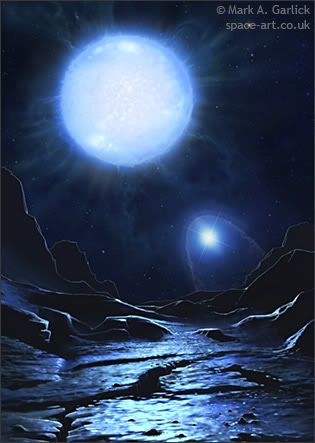
Most now Believe We are in A Binary Star System; All Great things come in twos!!!
Everything has both Yin and Yang aspects. There is another Half to our Star System!!!
So if our Sister Sun is heading at us………..
Wouldn’t this Also mean we are heading towards IT at the same TIME???
What kind of (ACTION At a Distance) will we SEE??? Or has it Already Started???
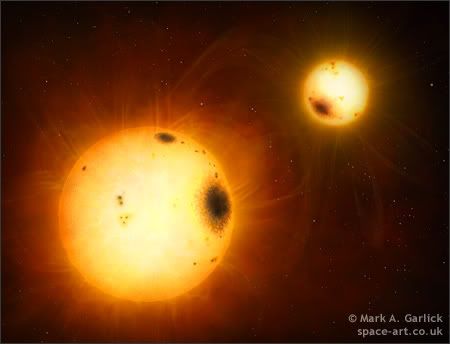
Could A Moon or Hollow Planet really be Ancient Fallout Shelter???
Built thousands of Years ago to survive the NEXT time Earth is Destroyed???
Let’s take a good Look at what this Star will do to the Surface of Earth!!!
Will all the water Slosh over the Surface of the globe at high Velocity???
Just how much Water/Ice will this Dark Star bring with it???
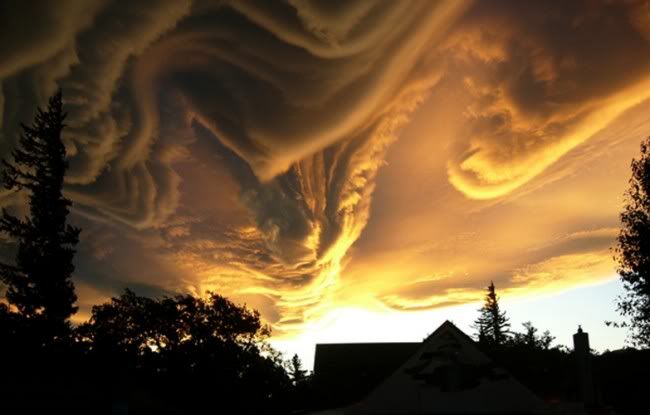
Have you ever wondered where the moon came from?
Have you ever contemplated how the asteroid belt Came to be?
These are basic things to WONDER about!! We need everyone’s help!! Do your part!!
When the student is ready, the teacher will present one’s self.
Come help us figure this mystery OUT!!!!
No matter what your color or belief or age, YOU can be a scientist!!
Challenge yourself, your peers, your teachers. Participate in a revolution in science!!
UNDERSTAND, IT IS YOUR WORLD!!! & TOGETHER we can Figure it OUT!!!
When WE all UNDERSTAND HOW MUCH WE ARE THE SAME,
TRUE POSITIVE things happen all around YOU!!!
Your Children, (ARE) Tomorrow's LEADERS!!!-------------->>>>>>>>>>>>
------------------------------------------------------------------------->
These are for Planet X, Precession & Pole/Magnetic Reversal research ONLY!
NOT!! Religious debate!! Your faith is your OWN BUSINESS!!
We are here for Research ONLY!!
If you have an open mind, you will GO far!!!
------------------------------------------------------------------------->
---->>> includes:
------------------------------------------------------------------------->
BOOKS & PAPERS: VIDEO CLIPS & 47 hour long RADIO interviews
from the binary research institute
------------------------------------------------------------------------->
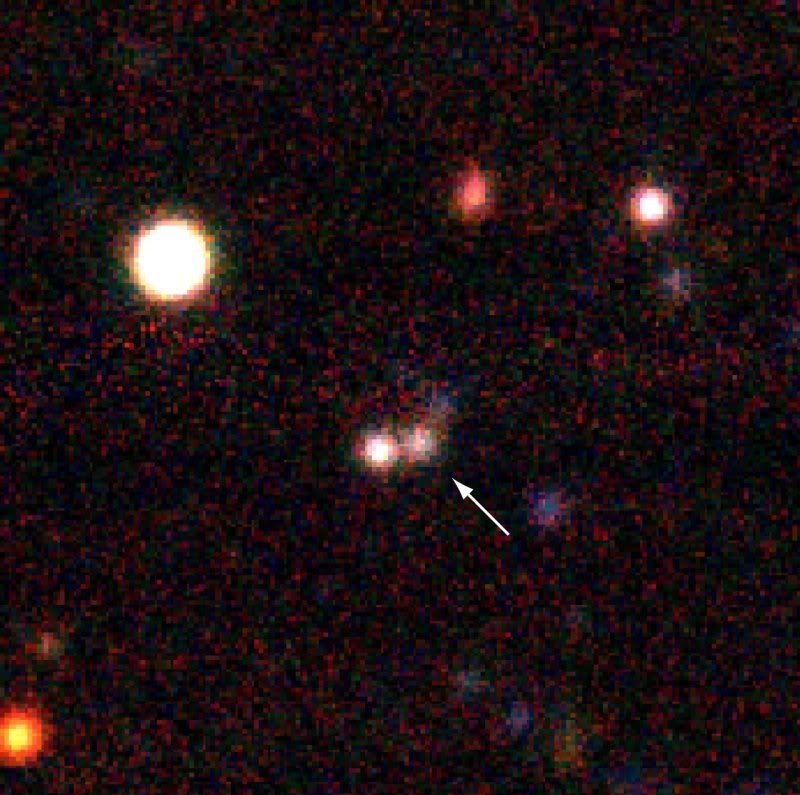
http://www.binaryresearchinstitute.org/
Comparison of Precession Theories.An Argument for the Binary Model.Walter Cruttenden.2009.pdf
Sample:
Consideration of Binary Prevalence
It should be noted that both models were put forth at a time in the West when there was
little or no knowledge of the extent of binary star systems. However, it is now estimated
that more than 80% of all stars may be part of a binary or multiple star relationship4.
Since we now know that numerous star types such as black holes or neutron stars and
many brown dwarfs are essentially impossible to see, and very often difficult to detect,
the number of multiple star systems must be higher than a census of strictly visible stars
4 From NASA’s Chandra X-Ray Observatory website
10/1/03 Comparison of Precession Theories Page 4
would indicate.
Furthermore, because very long cycle binary systems would logically
take very long periods of time to notice or verify as binary motions, it would not be
unrealistic to expect the verified percentage to move toward the upper estimate over time.
Consequently, our Sun and solar system would be looking more and more like an
anomaly if it were indeed a single star system as opposed to a partner in a multiple star
system.
If we are in a binary system, and Newton’s laws work just as well outside the solar
system as inside the solar system, then the Sun’s dual would most likely need to be a dark
companion such as a brown dwarf or theoretical old neutron star even some large planet
like mass that also has a very long orbit period making any of its effects difficult to
notice5. It could even be a not too distant black hole that is not currently consuming
matter and therefore currently difficult to detect.
Another possibility is that MOND (Modified Newtonian Dynamics) or some variation of
local gravitational dynamics might come into play at long distances outside the solar
system. This of course would open the possibility that the Sun may have a visible
companion (and coincidentally would solve much of the dark matter problem). We
cannot expound on this particular possibility without significant further research but we
can not rule it out either given the growing evidence that something is moving our solar
system in an elliptical pattern far tighter than any galactic motion would produce.
Historical Perspective: Not only were Copernicus and Newton unaware of binary
prevalence, they also assumed a “static Sun” when they first postulated a heliocentric
system with a wobbling Earth. They had no knowledge of invisible stars like black holes
or brown dwarfs, and they were unaware that our Sun is moving at great speed through
local space or that it could possibly be gravitationally bound to any other extra-solar
system mass (this is obviously before knowledge of any galaxies or galactic motion).
Consequently, it is not expected that they would consider anything outside the solar
system as a causative factor in producing a solar system (or Earth from our point of
view) that displays an apparent wobble relative to the fixed stars.
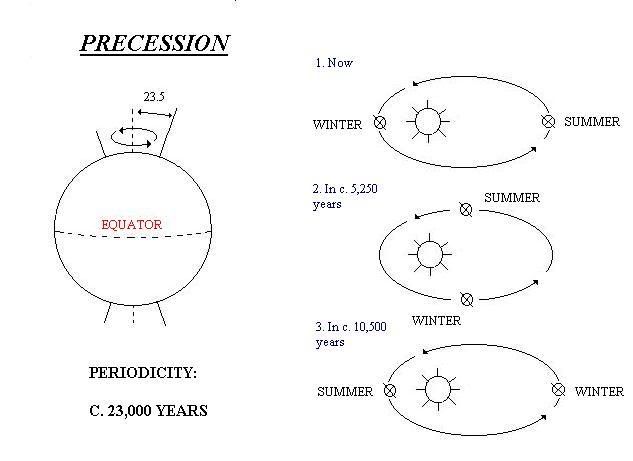
Model Comparisons
Although modern science does recognize that our solar system is located somewhere
about two thirds out on one of the Milky Way galaxy’s spiral arms, and that it is likely
that we would orbit the center of the galaxy in a period of about 240 million years, the
current model of precession surprisingly still assumes a static motion for our Sun. In
inquiries made to NASA’s VLBI Group and JPL, about why no motion of the solar
system is computed into current lunisolar precession theory equations, we hear that “any
5 Any binary system with a partner star more than 5 times the distance between the host star and its farthest planet should be able to support a planetary system without jeopardy to the stability of their orbits,according to Geoff Marcy, Professor of Astronomy at the University of California, Berkeley 10/1/03 Comparison of Precession Theories Page 5
motion relative to inertial space is considered to be so small that it would only end up as
noise in the precession calculations”. The exact words in an email from Dan Mac Millan,
at NASA’s VLBI Group are:
“The answer to your question is that we do not account for the geometric effect of galactic
rotation. It is a very small effect. A galactic rotation period of 240 million years -> a rotation rate of
~26 nrad/yr. If the radio sources we observed were at distances approximately equal to the
distance to the galactic center (~3x10^4 light years), then this rotation rate would translate to an
error of about 15-20 cm/yr in our estimates of intercontinental baselines. But the distances to the
extragalactic radio sources are ~10^9 light years so the effect is much smaller ~ 0.01 mm/yr.
Our current precision is at the 0.1-0.5 mm/yr level so we are not sensitive to this effect.”
If the only motion of our Sun and the solar system is around the center of the galaxy then
NASA is correct, any change in orientation (precession) due to the “geometric effect”
would be smaller than current rounding errors. However, if the solar system were moving
in any intermediate orbits on its way around the galaxy, i.e. a 24,000-year binary orbit,
then the “geometric effect” would be 10,000 times greater. Yet because it is
automatically “presumed” that there is little or no geometric effect due to the motion of
our solar system no one is looking for any such effect on any scale. Consequently all
major change in orientation (meaning the entire 50 arc seconds of annual Earth
reorientation to inertial space) is attributed to the only other assumed cause; lunisolar
wobble, even if that cause is unproven.
---->>>
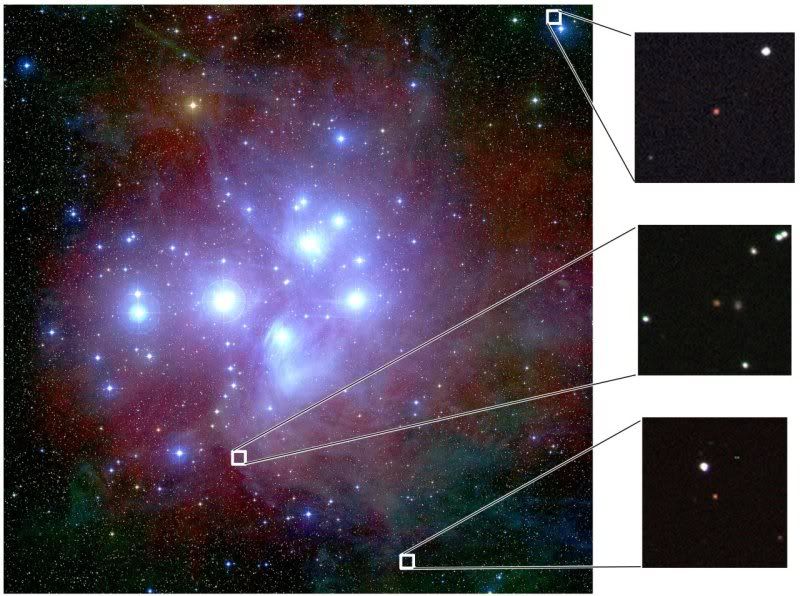
Dual Star Distance Calculations.pdf
---->>>
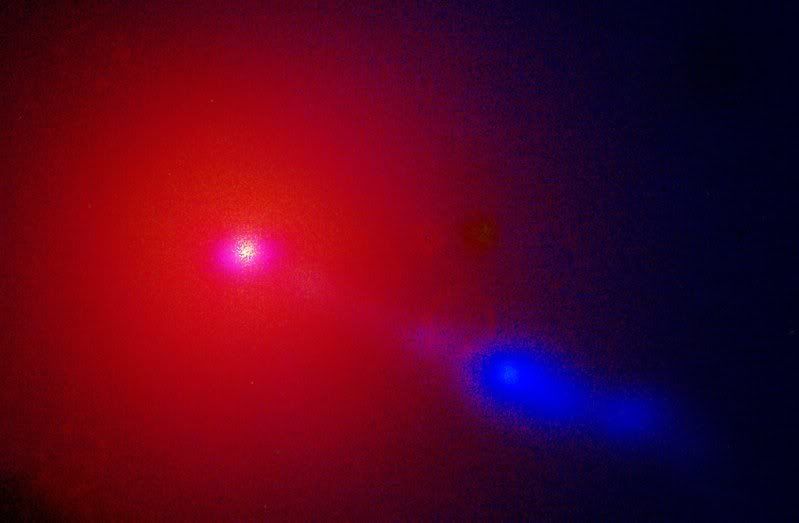
Earth Size Planet to Be Found in Outer Solar System.National Geographic News.docx
Sample:
A planet roughly the size of Earth could be tracing a vast, elliptical orbit at the outer edge of our solar system—and astronomers in Japan think they know where to find it.
The presence of this unnamed body has been suggested before, noted Tadashi Mukai, a professor at Kobe University's department of earth and planetary sciences.
"We have been able to identify more than 1,100 objects beyond Neptune since 1992, and a huge number of objects are showing large orbital eccentricities and elliptical orbits," Mukai said.
This suggests that a body with sizeable mass must be influencing the movement of these objects by exerting a gravitational pull.
But the extreme distance and unusual orbit of the elusive "Planet X" have made it difficult to spot even with the most advanced telescopes.
In a paper appearing in an upcoming issue of the Astronomical Journal, Mukai and colleagues propose that other researchers have simply been looking in the wrong place.
"We have reached our conclusions from simulations that explain the orbital elements," Mukai said.
"We are now looking in places that we have not looked before, and I think we will be able to see the planet within the next five or ten years."
---->>>
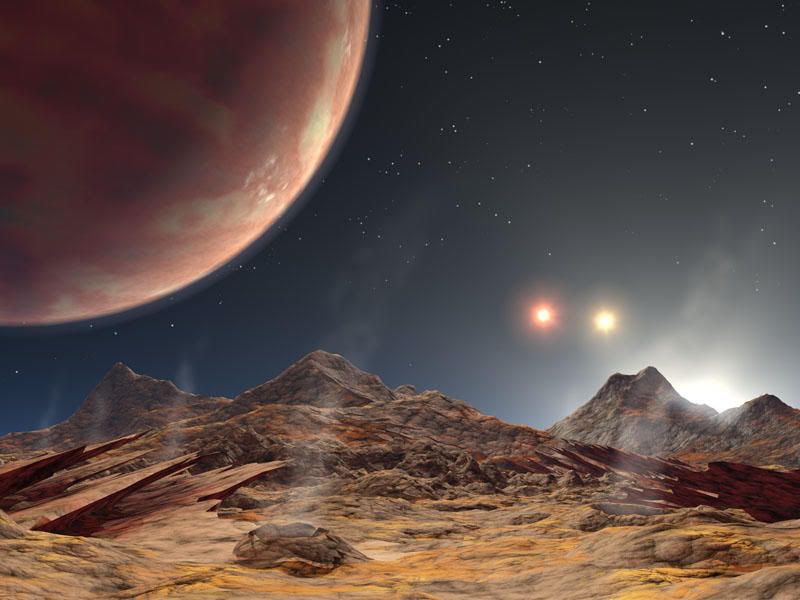
Evidence our Sun may be part of a long cycle binary system.Walter Cruttenden & Vince Dayes.2009.pdf
Sample:
A recent study of the phenomenon known as “Precession of the Equinox” has led researchers
to question the extent of lunisolar causation and to propose an alternative solar system model
that better fits observed data, and solves a number of current solar system anomalies.
The standard model was theorized before there was any knowledge of the life cycle of stars, or
awareness that some stars are non-visible and could thereby exert unseen gravitational
influence. Also, the old model was developed before knowledge of binary prevalence or any
understanding of binary star motions. Indeed, the standard “single sun with lunisolar wobble
causing precession”, was originally developed at a time when the Sun had only recently
replaced the Earth as the center of the solar system and the Sun was thought to be fixed in
space. Consequently, any theory to explain the observed phenomenon of precession of the
equinox had to be based solely on movement of the Earth. Although, it has stood for almost
500 years with only minor tweaking, it fails to answer a number of well documented solar
system anomalies:
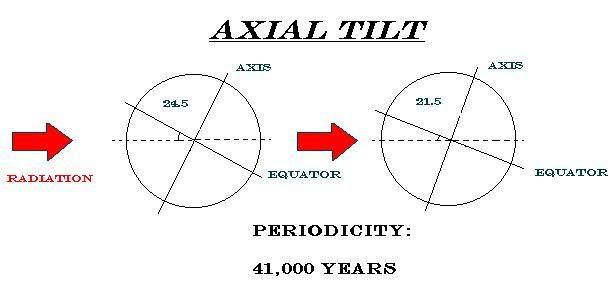
• Angular Momentum: Why is there an anomalous distribution of angular momentum in
the solar system, and why do the Jovian planets have most of the angular momentum
when the Sun has most of the mass? (Caroll and Ostlie 1996)
• Sheer Edge: Why, just beyond the Kuiper Belt, does our solar system seem to have an
unusual sheer edge to it? (Allen et al. 2001) This is surprising for a single sun system.
• Sidereal vs. Solar Time: Why is the delta (time difference) between a sidereal and
solar day attributed to the curvature of the Earth’s orbit (around the Sun), but the delta
between a sidereal “year” and solar year is attributed to precession?
• Comet Paths: Why are many comet paths concentrated in a non-random pattern ?
(Matese et al. 1999)
• Acceleration of Rate of Precession: Why has the annual precession rate increased
over the last 100 years? (Fig. 1) What could cause it to slow down or speed up?
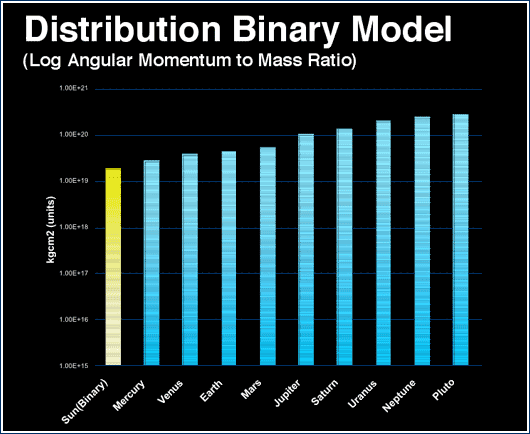
• Equinoctial Slippage: Lunisolar precession theory would cause the seasons to shift
were it not for a concurrent slippage of the equinoctial point around the Earth’s orbit
path (ecliptic). Yet lunar cycle equations contradict this motion? Why can’t it be
explained with current theory?
Currently, all of these questions have different theoretical solutions i.e. the angular momentum
may have “disappeared” due to an early solar magnetic force which has also disappeared, and
the sheer edge may be due to a rogue planet that swept by our solar system in fairly recent
times, but is now gone, etc.
We would like to propose a new model, based on a binary system, which will provide a single
and greatly simplified solution to all these questions.
---->>>
Gods Of The new Millinium by Alan Alford.docx
---->>>
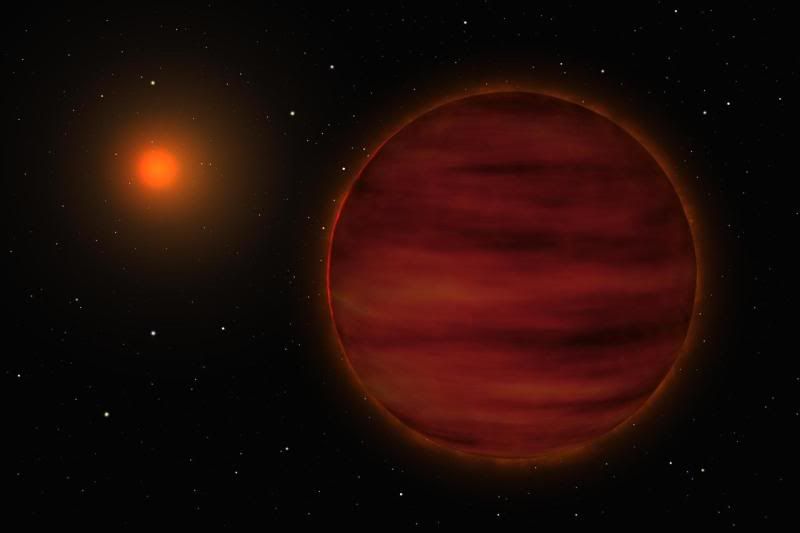
(this article is not from walter cruttenden or binary research Institute)
ISSUES THAT MATTER MOST.4th Edition.PLANET X (& 2012) parts 12&3.2009.192 pages
info:
We believe the coming earth changes are the main reason for trying to speed up the process of getting people microchipped and their main motivation for tightening border controls. A mass panic would see people fleeing to high altitude areas and would quickly cripple and collapse the current power structure that these elitist snobs rely upon to execute their control over the populace.So what will happen? How will it get worse? What will we be experiencing in just a few years time? Some believe winds of upto 400 miles per hour will be one extreme weather we will have to cope with...No building could stand upto that unless dome shaped. The magnetic field of the incoming planet x could very possibly cause a pole-shift, and others believe the magnetic shield of earth will be brought down allowing lethal amounts of solar radiation to reach the surface of earth.They don't want you to know any of this, you won't hear this on the radio, you won't watch it on your TV, you wont read it in your newspaper. Go and listen to the archived shows on http://yowusa.com it
is probably one of the best sources of information out there on Planet X.
Regardless of where people say Planet X is currently located, and it varies, the evidence speaks for itself. Let's not also forget that scientist now know that over 90% of the solar systems in our galaxy are binary star systems. Looks like ours is too. The other common question is why can't we see it. Well we can't see the planets on the edge of our solar system because of poor visibility and sheer distance. Not to mention the fact that Planet X is believed to be a Dark Star. As it gets closer this will change.
Planet X is on an eliptical orbit, and passes the earth every several thousand of years according to a historical account given in the Kolbrin Bible. It would explain why we are able to find artifacts, man made artifacts that pre-date known civilisations. Because Planet X probably wiped them out too. Planet X is even mentioned in some of the worlds oldest ancient texts. Don't expect them to tell you the truth,there is too much at stake.
---->>>
Is AiG Helping or hindering.docx
---->>>
justinstephens.blogspot 2012.docx
---->>>

Moon Data Sidereal Almanac 4-7.pdf
Moon Data Sidereal Plus.pdf
Moon Data Tropical Almanac 4-7.pdf
---->>>
NASA Baffled by Unexplained Force Acting on Space Probes.docx
---->>>
On Newton's paradoxes.Carlo Santagata.2004.pdf
---->>>
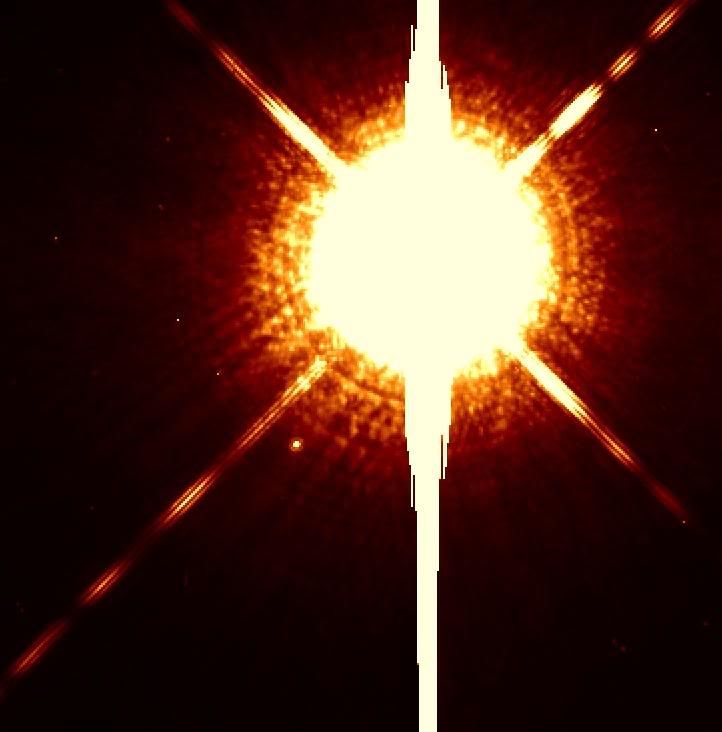
Precession Of The Equinox.Ancient Truth Celestial Motion.Walter Cruttenden.2009.pdf
sample:
Missing Motion and the Lunar Witness
In Ptolemy's day people thought the Sun orbited the Earth. Everyone could see the Sun rose in the East and set in the West, and no one could feel the Earth spin, therefore the only way to explain the Sun’s motion through the sky was to conclude the Sun itself went around the fixed Earth. Therefore, a missing motion (the Earth's spin) led to an incorrect conclusion.
Although this European belief held for almost a thousand years, the Moon never confirmed the incorrect motion of the Sun and Earth. Had one bothered to look carefully, they would notice the phases of the Moon were out of synch with the Moon’s revolutions around the Earth. The only way the Moon could go around Earth every 27.3 days, yet a new Moon could only be seen every 29.5 days, was if the Earth itself was curving around the Sun. This is proved with relatively simple rotation calculations but unfortunately, no westerner seemed to correlate the two facts for over a thousand years.
A similar misunderstanding; missing motion and failure to look at the lunar data, has led to another incorrect conclusion about the mechanics of our solar system. Specifically, the phenomenon known as “precession of the equinox” has been attributed to torque primarily from the Sun and the Moon, wobbling the Earth. The logic goes something like this: Everyone can see the Earth does not realign with the fixed stars at the time of the annual equinox, it is off by about 50.29 arc seconds per year. Copernicus said this is because the Earth’s pole “wobbles”, and Newton said that if it did wobble it must be due to the gravity of the Sun and the Moon acting upon the oblate Earth. The combination of these two principal forces is supposed to cause the pole to shift clockwise by the observable 50.29 arc seconds per year, meaning the equinox would arrive 50.29 arc seconds short of that point in the Earth’s orbit path that the equinox occurred at in the prior year. Because this is the observable, and there are no other theories, this “lunisolar” theory of precession has become widely accepted.
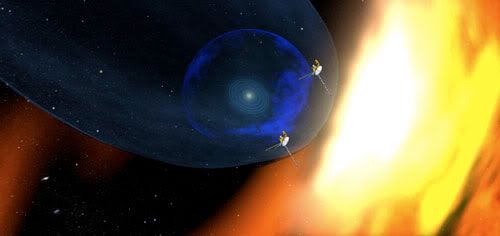
While the observable is true, lunar data shows the purported cause is not. Just as Ptolemy failed to consider another motion, the spinning Earth, and therefore came to the wrong conclusion when observing the Sun going around the Earth, so too are modern scientists forgetting to account for a motion. This time the missing motion is the solar system curving through space. With the solar system curving through space at about 50 arc seconds per year, and apparently some light torque upon the Earth, the solar system is gradually reorienting the Earth to inertial space (or precessing) at this rate. It is the motion of the solar system that causes precession, not lunisolar forces. Lunar rotation calculations help us understand this point:
If the Earth were coming up about 50 arc seconds short of the equinoctial point that it was at in the prior year, then lunar data would show the Earth goes around the Sun 50 arc seconds short of 360 degrees in an equinoctial year. But it does not show this. It shows that the Earth goes around the Sun 360 degrees in an equinoctial year. Yet anyone can see that the Earth in relation to inertial space appears to move around the Sun 360 degrees only in a sidereal year. Indeed, fixed star to fixed star has almost become the litmus test for what is or isn’t a 360 degree movement. But like Ptolemy’s Sun, that appears to orbit round the Earth, motions in space can be deceiving.
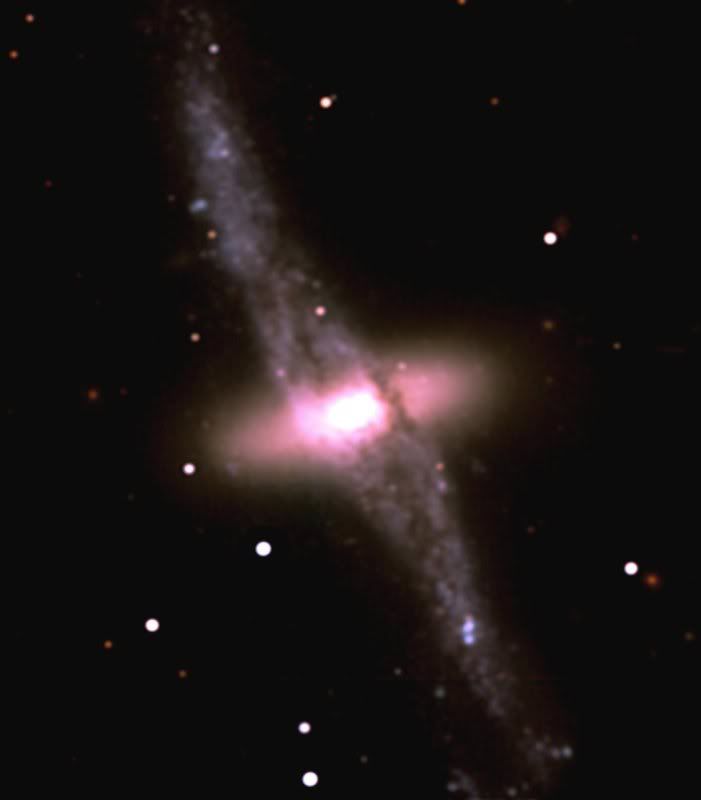
Lunar calculations based on tropical data clearly show the Earth goes around the Sun 360 degrees in an equinoctial year. Interestingly, if one plugs in only sidereal data they also show the Earth moves 360 degrees relative to the fixed stars in a sidereal year, yet this orbit path of the Earth around the Sun takes 20 minutes longer and is 22,000 miles wider in circumference. Now obviously, the Earth does not have two different orbit paths around the Sun each year. So which is right? Mathematically, they are both correct; the Earth does move 360 degrees around the Sun in a solar year and does move 360 degrees relative to the fixed stars in a longer sidereal year. The startling conclusion is, while the Earth is moving 360 degrees counterclockwise around the Sun in a solar year, the entire solar system (containing the Earth Sun reference frame) is moving clockwise relative to inertial space. The mathematical calculations support no other conclusion.
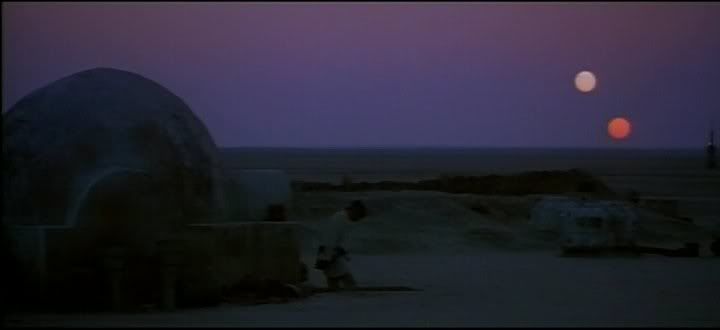
It is the missing motion of the solar system curving through space that modern scientists have failed to calculate in their lunisolar precession theory. But the Moon does not lie. Its movement is exact and acts like a witness to the Earth’s motion. The only way the Sun can appear to move around the Earth, and be confirmed by lunar data, is because the Earth is spinning on its axis. Likewise, the only way the Earth’s axis can appear to precess or wobble relative to inertial space, and not wobble relative to the Sun as confirmed by lunar data, is if the solar system (the reference frame that contains the Sun and Earth) is curving through space. Furthermore, the only way the solar system can be curving through space at a rate of 50 arc seconds per year, is if it were gravitationally affected by another very large mass: a companion star.
---->>>
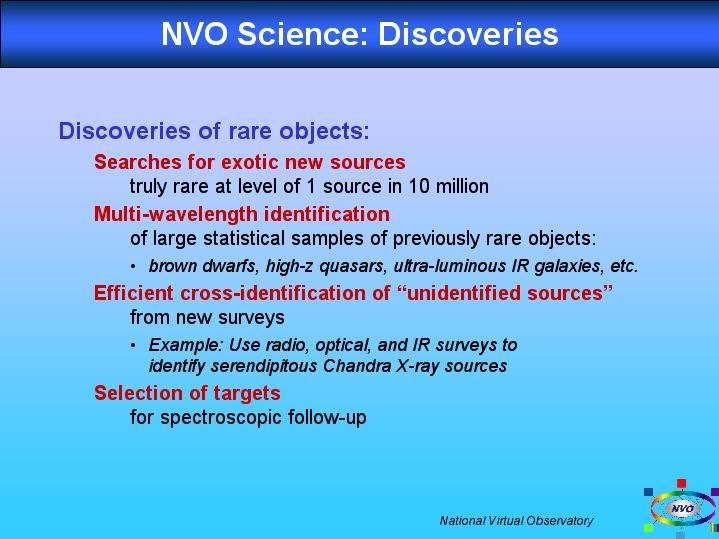
Terrestrial Planet Formation in Binary Star Systems.docx
Sample:
Stars rarely, if ever, form in isolation. More often, a giant molecular cloud will create dozens or hundreds of stars in relatively close proximity. Binary star systems, composed of two stars orbiting their mutual center of gravity, are actually just as common as singles. For stars the size of our Sun, about 50% form in binary systems.In the search for other worlds like our own, should we limit ourselves to stars like our own? Must we cut the field in half before we start looking? Might binary stars harbor Earth-like planets as well?
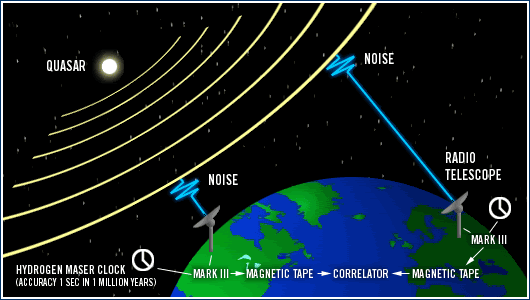
The answer, of course, is that it depends on the system. In principle, stable orbits should be possible for planets that are always much closer to one star than the other. But the devil is in the details — if scientists are going to spend valuable telescope time on binary stars, they need to know what they're looking for. How close can two stars be to each other and still form planets? And even if planets form, can their orbits remain stable over billions of years?
A small collaboration of scientists at NASA’s Ames Research Center (Elisa Quintana, Jack Lissauer), University of Michigan (Fred Adams), and the Carnegie Institution of Washington (John Chambers) has taken steps to answer these questions. Modern telescopes can measure the orbital parameters of binary stars quite accurately, so it makes sense to first ask what kinds of star systems will preserve the innermost region of the protoplanetary disk.
The simulations of Quintana and her colleagues are fairly straightforward. After choosing the masses and orbital parameters of the two stars, 140 planetesimals (mass = 1% Mearth) and planetary embryos (mass = 10% Mearth) are arranged around one of the stars so that their overall mass distribution resembles that of a protoplanetary disk. "The disk is modeled after the Solar nebula," Quintana explains, "we’re comparing the planet formation process in these binaries to models of the Solar System." In other words, they are trying to find out what our Solar system might have looked like if the Sun were a binary star.
---->>>
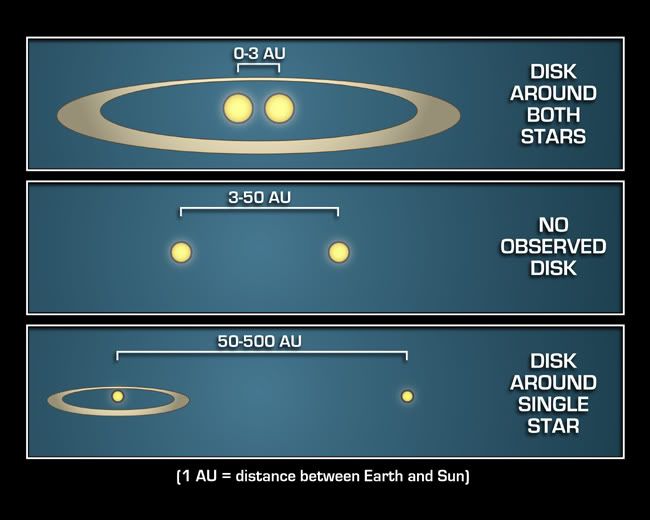
Theory of Precession.Walter Cruttenden.docx*******
Sample:
Angular Momentum The result of the momentum of a rotating body and its distance from the axis of rotation.
Binary Star A star that is gravitationally bound to another and orbits the other star around a mutual center of mass. The majority of stars in the Milky Way Galaxy are in binary or other multistar systems.
Black Hole A collapsed star whose mass is condensed into a single point is space. The gravitational force generated by a black hole is so strong, that not even light can escape.
Brown Dwarf A celestial body that resembles a star but does not emit light because it is too small to ignite internal nuclear fusion. Brown dwarfs are extremely difficult to detect and their existence was only recently confirmed.
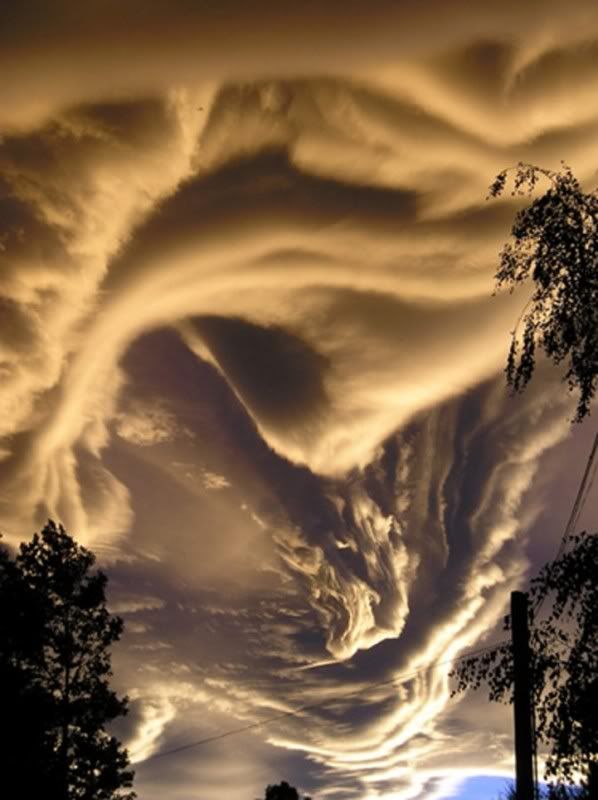
Comet A celestial body, having a head consisting of a solid nucleus surrounded by a nebulous coma and an elongated curved vapor tail arising from the coma when it gets sufficiently close to the sun. Comets are thought to consist mostly of ammonia, methane, carbon dioxide, and water.
Kuiper Belt An area of asteroids and debris just beyond the orbit of Pluto. Recent observations suggest the Kuiper Belt ends abruptly at approximately 50 AU.
Milankovitch Cycles The results of studying past global climate changes over millions of years. One of the causes in climate change is precession of the equinoxes, which seems to have a period of 22,000 to 23,000 years, over millions of years.
Oort Cloud Proposed as the source of comets, the area of debris spanning a distance of one to two light years out from the Sun, and surrounding the solar system.
Precession This catch all term is now used to describe both the phenomenon of the precessing equatorial point as well as the Earth movement itself.
Precession of the Equinox The age old phenomenon whereby the equatorial point moves westward (precesses) through the twelve zodiacal signs.
Red Dwarf A small cool star. Approximately 100 times the mass of Jupiter. Can be very difficult to detect.
Sidereal Year The time required for one complete revolution of the earth around the sun, measured relative to the fixed stars, a time period equal to a mean 365.2563 rotations of the earth.
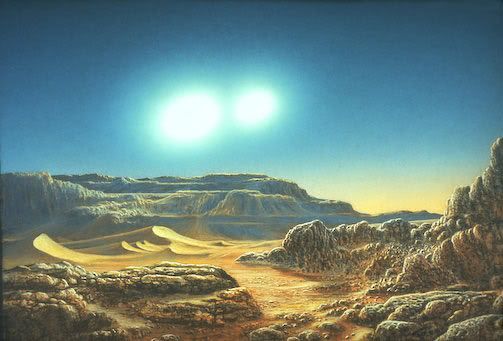
Tropical Year The time required for one complete orbit of the earth, measured relative to the sun, a time period equal to 365.2422 rotations of the earth.
Tropica/Sidereal Delta The time difference between the two years above which is equal to the value of precession, approximately 20 minutes in time or 50 seconds of arc in a year.
Virtual Observatory A “virtual telescope” capable of processing many years of archived astronomical data for patterns or tracks of faint orbiting bodies.
Wobble The terminology used by Copernicus to describe the apparent movement of the Earth in the phenomenon known as "Precession of the Equinox". He said precession of the equinox was caused by "wobble or libration". He deemed this the "third motion" of the Earth.
Zodiac A band of the celestial sphere extending about 8° to either side of the ecliptic that represents the path of the principal planets, the moon, and the sun. The 12 constellations within this band represent the constellations of the zodiac.
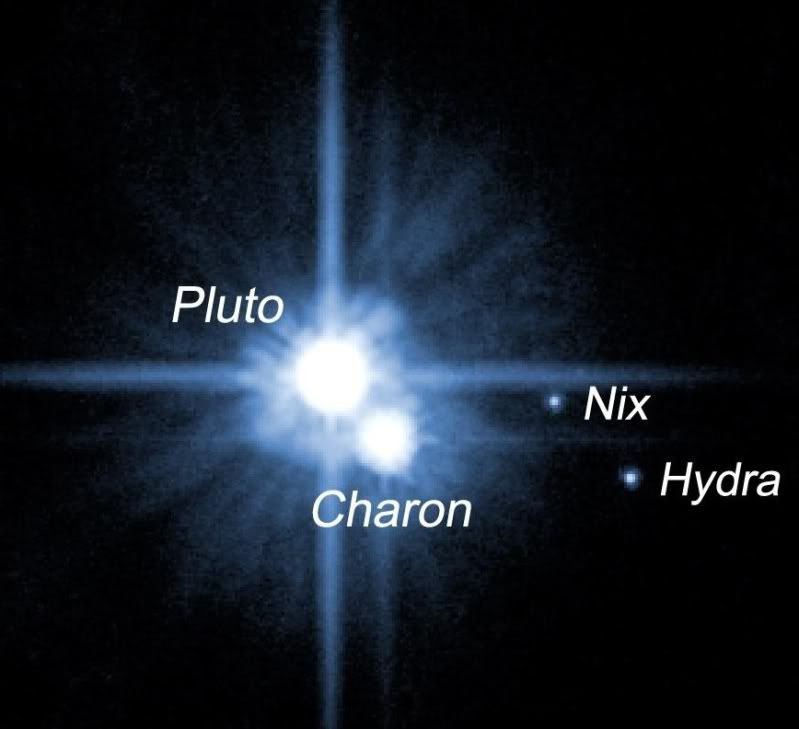
Reference Frames and Precession Riddle
Under the current lunisolar theory of precession it is assumed that the earth goes around the sun 359 degree 59 minutes and 10 arc seconds in a Tropical year, the period from like equinox to like equinox, which is equal to 365.2422 rotations of the earth. This is true if you measure the position of the equinox relative to the fixed stars “outside” the solar system but it is not true if you measure the movement of the equinox relative to the sun or moon or other objects “within” the solar system, where the lunar data shows us that the earth goes around the sun a complete 360 degrees in a tropical year. Unfortunately, neither NASA or VLBI or any official agency suspects there is any difference in the two measurements so they do not bother to measure the earth’s orientation relative to nearby objects.
Earth orientation measurements are typically made relative to quasars because these objects are so distant (outside the galaxy) that they act as virtual fixed points, ideal for making measurements. And they are ideal. However, failure to consider that the solar system might be moving (at a rate much faster than the assumed .005 arc seconds per year around the galaxy) has led to a misinterpretation of the VLBI data.
If the solar system were not moving then simple conclusions about the earth orientation data would be correct (Footnote 1). Or if we knew exactly how much the solar system was moving we could account for such movement and add or subtract such amount from the VLBI measurements. The problem is the solar system moves, and this moving frame needs to be taken into consideration when using points of reference outside the moving frame. As of this writing VLBI data interpretations do not account for this motion or any moving frames.
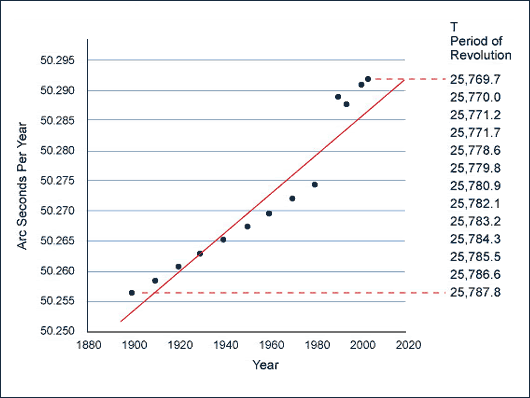
Ironically, astronomers unknowingly recognize the two different frames at work when it comes to routine calculations within the solar system. For example, when they plot the position of planets or moons within the solar system they use a tropical frame, which by definition excludes precession (Footnote 2) thus no precession adjustment is required or even considered. However, when the position of a stars need to be found you first find the object at a point in time (say J2000) then add precession for each year that has passed since that point. Thus current ephemeris methods account for the two frames; precession is excluded when plotting objects within the solar system and included when plotting objects outside the solar system.
Riddle: If there are 50 arc seconds of earth wobble in 365.2563 spins of the earth then how much wobble (precession) is there in 365.2422 spins of the earth? Please take a moment to calculate your answer before reading on. Logic would dictate the amount of wobble is proportional to the earth’s rotation time – meaning it must wobble half as much in one day as it does in two days. But lunisolar theory does not allow this answer because precession is the “delta” between the two years.
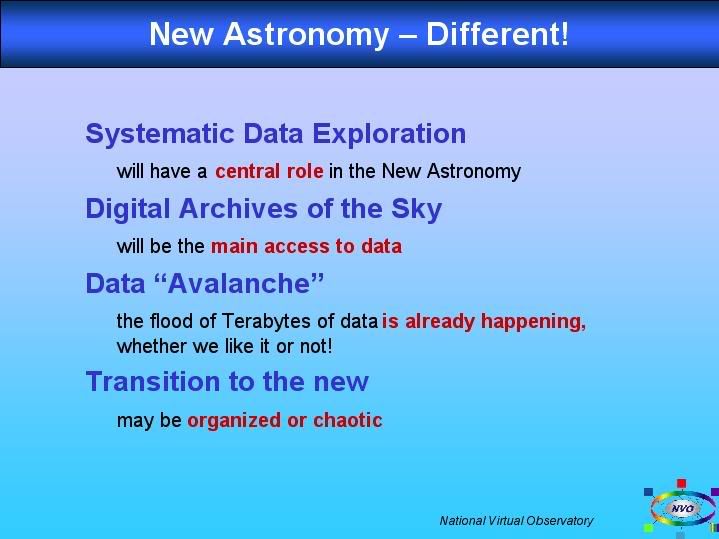
Logically, if the earth wobbles 50 arc seconds in 365 days, 6 hours, 9 minutes and 9 seconds (a time period equivalent to a sidereal year) then it should wobble 99.99% of this amount in 365 days, 5 hours, 48 minutes and 46 seconds (a tropical year time period). But because the cause of precession has been misdiagnosed – the lunisolar theory has no way to logically answer the question – so the question becomes a riddle.
The best answer under current lunisolar precession theory has to be: there is no wobble in a tropical year but for the next 20 minutes after that - the earth wobbles a full 50 arc seconds! The answer under the binary model is simple and logical: The earth does not wobble but it does change orientation to objects outside the solar system as the solar system curves through space. In the time period known as a tropical year it has curved through space 99.99% of the 50 arc seconds (of precession) found in a sidereal year. Therefore the phenomenon known as precession can only be due to the changing orientation of the solar system as it curves through space – it has nothing to do with a local wobbling of the earth.
Footnote 1: In a paper found in the Astrophysical Journal the authors claim to have measured the motion of the solar system concluding that it probably only curves about .005 arc seconds per year, allowing it to move once around the galaxy in about 240 million years. In spite of all the fancy words, the unstated assumption is that the delta between a sidereal and tropical year is due to a local wobbling of the earth (a.k.a. lunisolar precession). If the authors understood that there is no local wobbling, they would then find 50 arc seconds of motion per year, and likely change their conclusion!

Footnote 2: Remember precession is the delta between the tropical and sidereal years – the tropical year doesn’t have it – whereas the 50 arc second longer sidereal year has it.
The Lunar Cycle
There are several different methods employed in measuring the timing of the Earth's orbit around the Sun. A Tropical Year is defined as the annual interval from equinox to equinox, while a Sidereal Year is the time required for the Earth to re-align with the fixed stars. The annual time delta between the two is approximately 20 minutes. Current LuniSolar theory dictates that the Tropical Year be slightly short of a complete orbit, and that the Sidereal Year be representative of a complete 360 degree trip around the sun. The 20 minute time interval is the temporal equivalent to the precession rate of 50.29 arc seconds annually.
If this is the case, it should be reflected in lunar data comparisons, specifically in looking at the revolution delta between Synodic and Tropical Months within a single orbit. In one complete orbit around the Sun, the delta should be exactly 1, meaning if there were N Synodic revolutions there should be N+1 Tropical revolutions. The expectation under the LuniSolar model would be for the delta of one to occur only within the timeframe of the Sidereal Year. The following comparisons, though, show that the opposite is the case.
Missing Motion and the Lunar Witness
In Ptolemy's day people thought the Sun orbited the Earth. Everyone could see the Sun rose in the East and set in the West, and no one could feel the Earth spin, therefore the only way to explain the Sun’s motion through the sky was to conclude the Sun itself went around the fixed Earth. Therefore, a missing motion (the Earth's spin) led to an incorrect conclusion.
Although this European belief held for almost a thousand years, the Moon never confirmed the incorrect motion of the Sun and Earth. Had one bothered to look carefully, they would notice the phases of the Moon were out of synch with the Moon’s revolutions around the Earth. The only way the Moon could go around Earth every 27.3 days, yet a new Moon could only be seen every 29.5 days, was if the Earth itself was curving around the Sun. This is proved with relatively simple rotation calculations but unfortunately, no westerner seemed to correlate the two facts for over a thousand years.
A similar misunderstanding; missing motion and failure to look at the lunar data, has led to another incorrect conclusion about the mechanics of our solar system. Specifically, the phenomenon known as “precession of the equinox” has been attributed to torque primarily from the Sun and the Moon, wobbling the Earth. The logic goes something like this: Everyone can see the Earth does not realign with the fixed stars at the time of the annual equinox, it is off by about 50.29 arc seconds per year. Copernicus said this is because the Earth’s pole “wobbles”, and Newton said that if it did wobble it must be due to the gravity of the Sun and the Moon acting upon the oblate Earth. The combination of these two principal forces is supposed to cause the pole to shift clockwise by the observable 50.29 arc seconds per year, meaning the equinox would arrive 50.29 arc seconds short of that point in the Earth’s orbit path that the equinox occurred at in the prior year. Because this is the observable, and there are no other theories, this “lunisolar” theory of precession has become widely accepted.

While the observable is true, lunar data shows the purported cause is not. Just as Ptolemy failed to consider another motion, the spinning Earth, and therefore came to the wrong conclusion when observing the Sun going around the Earth, so too are modern scientists forgetting to account for a motion. This time the missing motion is the solar system curving through space. With the solar system curving through space at about 50 arc seconds per year, and apparently some light torque upon the Earth, the solar system is gradually reorienting the Earth to inertial space (or precessing) at this rate. It is the motion of the solar system that causes precession, not lunisolar forces. Lunar rotation calculations help us understand this point:
If the Earth were coming up about 50 arc seconds short of the equinoctial point that it was at in the prior year, then lunar data would show the Earth goes around the Sun 50 arc seconds short of 360 degrees in an equinoctial year. But it does not show this. It shows that the Earth goes around the Sun 360 degrees in an equinoctial year. Yet anyone can see that the Earth in relation to inertial space appears to move around the Sun 360 degrees only in a sidereal year. Indeed, fixed star to fixed star has almost become the litmus test for what is or isn’t a 360 degree movement. But like Ptolemy’s Sun, that appears to orbit round the Earth, motions in space can be deceiving.
Lunar calculations based on tropical data clearly show the Earth goes around the Sun 360 degrees in an equinoctial year. Interestingly, if one plugs in only sidereal data they also show the Earth moves 360 degrees relative to the fixed stars in a sidereal year, yet this orbit path of the Earth around the Sun takes 20 minutes longer and is 22,000 miles wider in circumference. Now obviously, the Earth does not have two different orbit paths around the Sun each year. So which is right? Mathematically, they are both correct; the Earth does move 360 degrees around the Sun in a solar year and does move 360 degrees relative to the fixed stars in a longer sidereal year. The startling conclusion is, while the Earth is moving 360 degrees counterclockwise around the Sun in a solar year, the entire solar system (containing the Earth Sun reference frame) is moving clockwise relative to inertial space. The mathematical calculations support no other conclusion.
It is the missing motion of the solar system curving through space that modern scientists have failed to calculate in their lunisolar precession theory. But the Moon does not lie. Its movement is exact and acts like a witness to the Earth’s motion. The only way the Sun can appear to move around the Earth, and be confirmed by lunar data, is because the Earth is spinning on its axis. Likewise, the only way the Earth’s axis can appear to precess or wobble relative to inertial space, and not wobble relative to the Sun as confirmed by lunar data, is if the solar system (the reference frame that contains the Sun and Earth) is curving through space. Furthermore, the only way the solar system can be curving through space at a rate of 50 arc seconds per year, is if it were gravitationally affected by another very large mass: a companion star.
---->>>

Winter is Coming. jim goulding.2008.pdf
Sample:
Chapter 1 – Seasons
Winter is coming. Society experiences a catalyst that shocks
everyone out of an individualized stupor. Suddenly focus is shifted on a
national level. This focus shifts attention from internal, national
problems to outer, world problems. World problems that were once
ignored by the people in this country come to the forefront. It’s as if a
collective mind turns its attention to what is going on outside this
country.
`
Many things happen after the catalyst. People feel as if society
itself is cracking at the seams. Our government can’t solve the simplest
problem. Nor can the individual seem to solve the simplest problem.
The vision of the future turns dark. There’s a sector of society that
can see this and can see what is happening. They start to talk of the doom
that is ahead and try to warn others.
This sector of society is clever when it comes to societal problems.
They understand, better than the other generations, that there is a
terrible event coming. They see reality for what it is. Furthermore, there’s
some older members of society that also sense the problem. They are the
people who are now over 62 years of age [2003]. They know they’ve seen
something or felt something like this before, but just can’t quite place it.
If they do know what it is they are sensing, they really don’t want to talk
about it. They know it’s futile. They know because they lived through it
once before. They are the only generation that experiences a crisis in
their youth; then, again when they are reaching and fully occupying old
age. These people were born from 1925-1942. They are the Silent
generation and they have a lot to offer us during this time, as does the
dying G.I. generation, born 1901-1924.
---->>>
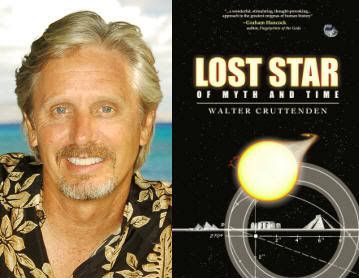
The Cosmic Influence.Radio Show.Walter Cruttenden.07 to 09.(47 Episodes)
info:
Carlos Aguirre
Walter and Shawn interview author Carlos Aguirre about his book "In The Greater Scheme of Things: Whispers of the Soul" Original Air Date 07/07/09.
Gregory Sams
Walter and Geoff interview author Gregory Sams about his book "Sun of gOd: Discover the Self-Organizing Consciousness That Underlies Everything." Original Air Date 05/18/09.
Marie D. Jones and Larry Flaxman
Walter and Geoff interview Marie D. Jones and Larry Flaxman about their new book "11:11 the Time Prompt Phenomenon: The Meaning Behind Mysterious Signs, Sequences, and Synchronicities." Original Air Date 05/08/09.
Hugh Newman
Hugh Newman is an earth mysteries and esoteric science researcher. His most recent book, 'Earth Grids - The Secret Patterns of Gaia's Sacred Sites', has been published by Wooden Books. Original Air Date 03/05/09.
Robert and Olivia Temple
Shrouded in mystery for centuries, the Sphinx of Giza has frustrated many who have attempted to discover its original purpose. Robert Temple sheds new light on this ancient structure and makes sense of age old anomalies. Original Air Date 03/03/09.
Boris Fritz
Boris Fritz is an Engineer and Senior Technical Specialist who has been involved in aerospace for the last 25 years. He has been studying the Great Year for over 40 years, and is fascinated by ancient history and religions. He passed his Doctoral exams at UCLA in the fields of the History of Religions, the History of India, the Sanskrit Language, and the Ancient Near East. Included in his studies were the older Vedic Sanskrit as well as Old Persian (Gathic Avestan) and Pali, the language of South East Asian Buddhist scriptures. He also has an M.A. in Asian Studies from Claremont McKenna University where he wrote his thesis on Pre-Tibetan Buddhist Tantrism. His B.A. is in Philosophy from Occidental College. Original Air Date 02/16/09.
Marvin H. Mills
A fresh look at the Mosque of Cordoba requires that we go back in time to the Phoenician era of the 2nd to 1st millennia BC and before that to a "Golden Age" stretching back thousands of years when there thrived civilizations that attained high technological and esthetic levels which eventually transmitted their influences to Spain. Hard evidence for this is minimal but circumstantial evidence is strong. Original Air Date 12/01/08.
Howard Falco
In August 2002, shortly after his 35th birthday, something rather remarkable happened, the first of two events that he now describes as “peak experiences.” These were extensive and astonishing shifts in awareness that happened instantaneously. The result for Howie was an immediate release from all disharmony and fear in life. He perceived a connection and oneness emanating from everything in the world. Each object in existence was revealed for its complete purpose and perfection. The experience of peace and tranquility pervaded every part of him. Original Air Date 10/29/08.
Exploring Damanhur
Damanhur is a collective dream transformed into reality thanks to the creative power of positive thought. It is a laboratory for the future, a seed that has been growing for over thirty years, little by little, constantly transforming and renewing itself so as to bring to life the reality its citizens together dreamed of and built. From the founders, a mere dozen people, to the thousand living today in or near the communities, the history of the Federation is witness to a project that has come to life, has grown and today is reaching out with a planet-wide commitment, as a new people bringing innovation and values, interweaving sociality, spirituality and respect for the environment, the recovery of ancient traditions and advanced technological research, with its roots deep in the territory, service and voluntary work conjoined with attention for everything happening in the world. Original Air Date 10/16/08.
Dr. Thomas Brophy
Thomas Brophy has a Ph.D. from the University of Colorado, was a staff research scientist at the Laboratory for Atmospheric and Space Physics, Boulder, with NASA interplanetary spacecraft projects, and was a National Science Foundation exchange scientist with the University of Tokyo and Japan Space Program. A member of one of the Voyager II spacecraft instrument teams, he developed theoretical understandings for data from the outer planets (Jupiter, Saturn, Uranus, Neptune), especially planetary rings and planetary dynamics. He was also involved in defining science goals for future space mission instrumentation. He devised a novel method of testing fundamental theories of planet formation by searching for extrasolar debris, that was reported on by Nature magazine. Those interests in general fundamental theory, and experience teaching at the University level, led to broader studies involving the non-calculable and immeasurable aspects of the universe, and Integral philosophy. Original Air Date 10/02/08.
Sam Geppi
Sam Geppi is a Vedic Astrologer and has recently developed the “Universal Astrology” System, which approaches astrology from a holistic perspective. Sam has close to 25 years of Vedic Study and experience, and he is a Certified Vedic Astrologer and Teacher through the American College of Vedic Astrology, as well as author of “The Ascendant – 108 Planets of Vedic Astrology”. He has also has contributed to various Astrology publications - including writing the 2007, 2008 and 2009 Vedic Astrology Forecasts for astrocenter.com (MSN Worldwide, Yahoo Worldwide, and Others). Original Air Date 09/12/08.
Steve Taylor
Steve Taylor is an author and teacher, whose main interests are anthropology, psychology and spirituality. Steve's articles and essays have been published in many magazines and academic journals, and his work has been featured widely in the media in the UK, including on BBC World TV and in The Guardian. He teaches courses on personal development (mainly on time perception and the psychology of happiness) at the University of Manchester CCE, and also teaches students with specific learning difficulties at Salford College. Original Air Date 07/14/08.
Edward F. Malkowski
Edward F. Malkowski has a lifelong interest in history, particularly ancient history with a special interest in philosophy and the development of religious beliefs from ancient to modern times. With the opinion that the ancient biblical stories in Genesis were based on historical fact, during the late 1990's he began investigating such a possibility which led to his first book Sons of God - Daughters of Men. This led to a deep interest in the origin of civilization, the curiously large monuments of Egypt's Old Kingdom, particularly the Sphinx, and the influence Egyptian philosophy and culture exerted in the ancient world. Two more books were the result: Before The Pharaohs and The Spiritual Technology of Ancient Egypt. Malkowski, whose professional background is finance and business administration, is also a software developer with interests in business strategy and philosophy as it relates to the advancement of technology. Original Air Date 06/17/08.
Dr. Manjir Samanta-Laughton
Walter and Geoff interview Dr. Manjir Samanta-Laughton about her book, Punk Science. After qualifying as a medical GP, a holistic therapist and working in the Bristol Cancer Help Centre, Dr. Samanta-Laughton, MD began a quest to highlight the links between science and spiritual ideas. This has culminated in the emergence of a new scientific vision that she communicates to the public in popular lectures, workshops and numerous articles. She has participated in various television documentaries including for the BBC, C4 and Sky and been interviewed by radio such as Passion for the Planet, MySpiritRadio and the BBC Asian Network as well as newspapers The Guardian, the Sunday Express and others. Original Air Date 06/04/08.
Kala Ambrose
Walter and Geoff interview Kala Ambrose a noted metaphysical teacher, intuitive, speaker, author and talk show host. Kala has lectured on esoteric teachings, ancient myths, developing intuition and psychic ability, beauty and peace through traditional feng shui, the meaning of abundance and prosperity in the universe, crystals and gemstones, sacred symbols, dream interpretations, celebrating the seasons, soulspeak, and wise woman wisdom (the divine feminine). Original Air Date 05/20/08.
Annamaria Hemingway
Walter and Geoff interview Annamaria Hemingway and discuss her book "Practicing Conscious Living and Dying: Stories of the Eternal Continuum of Consciousness," an uplifting collection of spiritually illuminating texts and powerfully thought-provoking real life stories, showing death as an integral part of life. Original Air Date 05/06/08.
William Sullivan
Walter and Geoff interview Dr. William Sullivan. Archaeoastronomer, historian, and student of myth, William Sullivan is the author of "The Secret of the Incas: Myth Astronomy and the War Against Time," which was featured in a two hour documentary on Channel 4, England. Having recently completed a five year stint as senior content consultant for a proposed museum of world mythology, he is currently working on a project to clarify the relationship between Algonquian mythology and the enigmatic Native American stone constructions scattered throughout the woodlands of New England. Original Air Date 04/22/08.
Glenn Kreisberg
Walter and Geoff interview radio engineer Glenn Kreisberg about the possiblility ancient cultures were aware of and used elements of the electromegnetic spectrum. Original Air Date 03/19/08.
Michael S. Schneider
Walter and Geoff interview Michael S. Scheidner about mathematics, it's appearence in the natural world, and its relationship to ancient views on the sacred nature of numbers. Original Air Date 02/25/08.
David Hatcher Childress
Walter and Geoff interview David Hatcher Childress. Known as the real-life Indiana Jones to the many fans of his books, he is a captivating speaker and the author or coauthor of over 15 books. He has traveled the world several times over, seeking adventure and the answers to the mysteries of mankind's past. Original Air Date 02/19/08.
Alan Weisman
What would happen to the world if humans were no longer part of the equation? Walter and Geoff discuss what would happen to the remnants of civiliztion as the world slowly returns to a natural state with Alan Weisman, author of the New York Times bestseller, The World Without Us. Original Air Date 02/11/08.
Dr. Ronald Mallet
Walter and Geoff discuss quantum mechanics along with the theoretical and experimental possibilities of time travel with University of Connecticut professor Dr. Ronald Mallet. Original Air Date 02/01/08.
Dr. Robert Schoch
Walter and Geoff discuss a range of topics with Dr. Robert Schoch of Boston University, from his work dating the Great Sphinx to the Pyramids to his latest book, The Parapsychology Revolution: A Concise Anthology of Paranormal and Psychical Research. Original Air Date 01/24/08.
Gary A. David
Walter and Geoff talk to Gary A. David about his research of the ancestral Puebloans and their descendants the Hopi, and delve into the some of the ideas in his book The Orion Zone: Ancient Star Cites of the American Southwest. Original Air Date 01/11/08.
Dr. Carmen Boulter
Walter and Geoff talk with Author and Professor at the University of Calgary Dr. Carmen Boulter about her work studying fragments of information about matriarchal cultures in predynastic Egypt and prehistoric Greece. Original Air Date 12/19/07.
Míceál Ledwith and Klaus Heinemann
Walter and Geoff talk with Authors Míceál Ledwith and Klaus Heinemann about their work studying the mysterious phenomena of Orbs. Original Air Date 12/18/07.
Laird Scranton
Walter and Geoff talk with Author and Researcher Laird Scranton about his work related to the cosmology and symbology of the Dogon, a West African people. Original Air Date 11/28/07.
Dr. Geoff Marcy
Walter and Geoff talk with Dr. Geoff Marcy the world's leading extra-solar planet hunter about his team's latest discovery, a 5 planet system orbiting 55 Cancri, a star just 41 light years from Earth. They also discuss some of Dr. Marcy's other recent findings, as well as the possibility of life and advanced civilizations in other star systems. Original Air Date 11/06/07.
Marguerite Manning
Walter and Geoff discuss concepts of astrology, karma, and the human connection to the universe with professional astrologer and author Marguerite Manning. Original Air Date 11/05/07.
Asha Praver
Walter and Geoff discuss the ancient idea of the Yuga Cycle and the belief systems surrounding it with Asha Praver. Original Air Date 10/24/07.
CPAK Reflections
Walter and Geoff reflect on the 2007 Conference on Precession and Ancient Knowledge. Original Air Date 10/10/07.
Susan Gregg
Walter and Geoff talk with Susan Gregg, the author of six books including The Complete Idiot’s Guide to Short Meditations, Dance of Power and the award winning Mastering the Toltec Way. Original Air Date 07/11/07.
Lynn McTaggart
Explore the nature of the Zero Point Field as Walter and Geoff chat with best selling author Lynn McTaggart. Original Air Date 05/21/07.
Marie D. Jones
Walter and Geoff talk quantum physics and its connection to humanity with author Marie D. Jones. Original Air Date 04/16/07.
Peter Kingsley
Walter and Geoff have an enlightening discussion on mystical ancient world tradtions with author and researcher Peter Kingsley. Original Air Date 03/19/07.
Weird Science
Walter and Geoff explore some of the more interesting recent science news stories. Original Air Date 02/19/07.
Carl Johan Calleman
Gain a whole new perspctive on the nature of the Mayan calendar when we interview Mayan Cosmologist Carl Johan Calleman. Original Air Date 01/15/07.
Barbara Marx Hubbard
Discussing some thoughts on the phases of human consciousness and civilization, and attempting to answer the question, "What is the meaning of our new power that is good?". Original Air Date 12/18/06.
Jean Houston
Disovering how to utilize our capcities and potentials to create a better world. Original Air Date 11/20/06.
Claude Swanson - Paranormal Physics
On the frontiers of physics, Dr. Swanson discusses his research into the phenomena of remote viewing and group consciousness. Original Air Date 10/16/06.
John Burke - Natural Energy and Ancient Sites
Discover the subtle magnetic properties of ancient sites and how they may have been used by our ancestors. Original Air Date 09/18/06.
John Dering - Electromagnetism in Ancient Structures Part 2
How does the cosmic environment that surrounds us influence human civilization, thought and consciouness. Original Air Date 08/21/06.
John Dering - Electromagnetism in Ancient Structures Part 1
How does the cosmic environment that surrounds us influence human civilization, thought and consciouness? Original Air Date 06/19/06.
John J. Harper
Shifts in consciousness and how they can affect humanity on a large scale over time. Original Air Date 05/15/06.
Graham Hancock - In Search of Lost Civilization
An unconventional thinker, Graham is an author, lecturer and TV personality who raises legitimate questions about humanity's history and pre-history. Original Air Date 04/17/06.
John Anthony West -Symbolism of Egyptology
Ancient Egyptian architecture and art disclose a richerand more universal wisdom than previously thought. Original Air Date 03/20/06.
---->>>
Folder of CLIPS:
Binary Sunset The Princess Appears - John Williams - Star Wars IV.flv
Deep Impact Films Earth as an Alien World.flv
Dr. Michio Kaku 3 types of Extraterrestrial Civilizations.flv
How the song 'Binary Sunset' has changed over the Star Wars movies.flv
If a Comet crashed into the Earth...impressive !.flv
Kobe University thinks they know where Planet X is.flv
MPL3D Solar System - Binary stars.flv
Night and Day on an Alien World Spitzer's Hidden Universe.flv
Our Sun's Dark Twin.flv
Something Wicked this way comes.flv
Star Wars - Binary Sunset (Episode IV. - A New Hope).flv
Visual Binary Stars.flv
---->>>
AUDIO:
Plus some sick drum and Bass for yo earDrums
Funked Up Radio May 7th 2009 - with special guest Komatic.mp3
VINYL AND CIRCUITRY with METHOD ONE live from San Francisco.mp3
------------------------------------------------------------------------->
SEED YE SALTY DOGS SEED!! DONT HIT N RUN YE DARN PIRATES
AND SAY THANKS IF YA LIKE IT!
Runnin-RED..Forward......WE flex for Planet X
Runnin-RED..Forward......WE flex for Planet X
Mindscape-Planet X
Drum&Bass (SONG) Come listen: http://www.bassdrive.com/v2/
------------------------------------------------------------------------->
These are for Planet X, Precession & Pole/Magnetic Reversal research ONLY!
NOT!! Religious debate!! Your faith is your OWN BUSINESS!!
We are here for Research ONLY!!
If you have an open mind, you will GO far!!!
------------------------------------------------------------------------->
Much thanks to the original people who UP'd these!!! You who help Us on Our journeys!!
We WANT to:
Gather and cross-check vast amounts of knowledge in many dozen specialized fields from scientists and researchers around the globe in addition to studying hundreds of historical documents spanning back to the dawn of history. These fields include archeology, geology, astro, geo & quantum physics, ancient languages & civilizations, paleontology, ancient history, genetics and others.
Events shape our lives, even distant and dark ones. From the time I was a wee little one, I have stopped my fear of dark places. I pick up my torch and journey alone through darkened corridors leading down into bottomless caverns of events past. I stumble upon the remnants of an intricate puzzle, which I bring back with me, and in the quiet of my dreams, are assembled before me.
The turning of the stars bring a time when my secrets can give you immortality.
but when that time has passed, those fleeting minutes gone, the secret is worthless.
until once again the stars unlock its power.
- Log in to post comments



